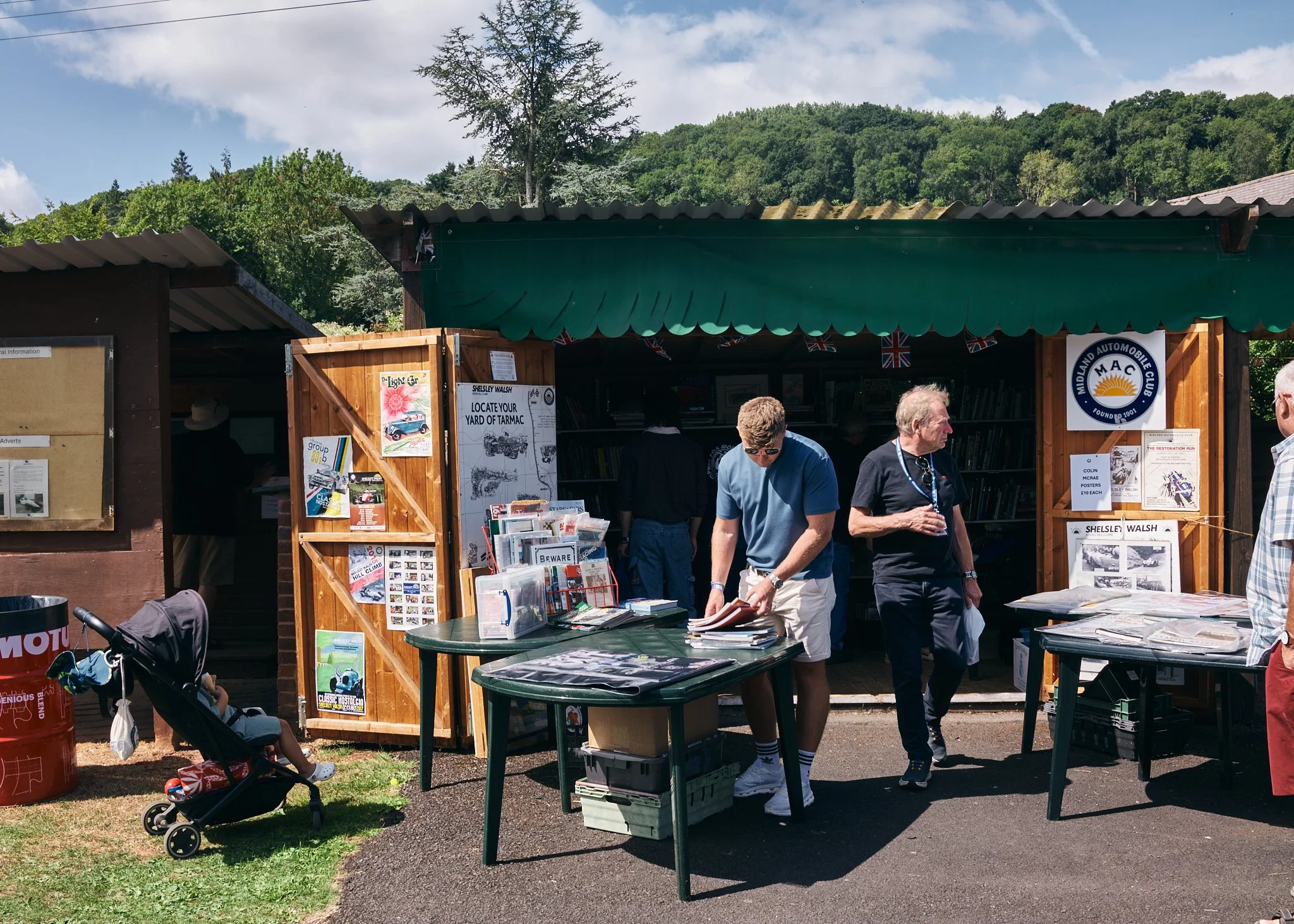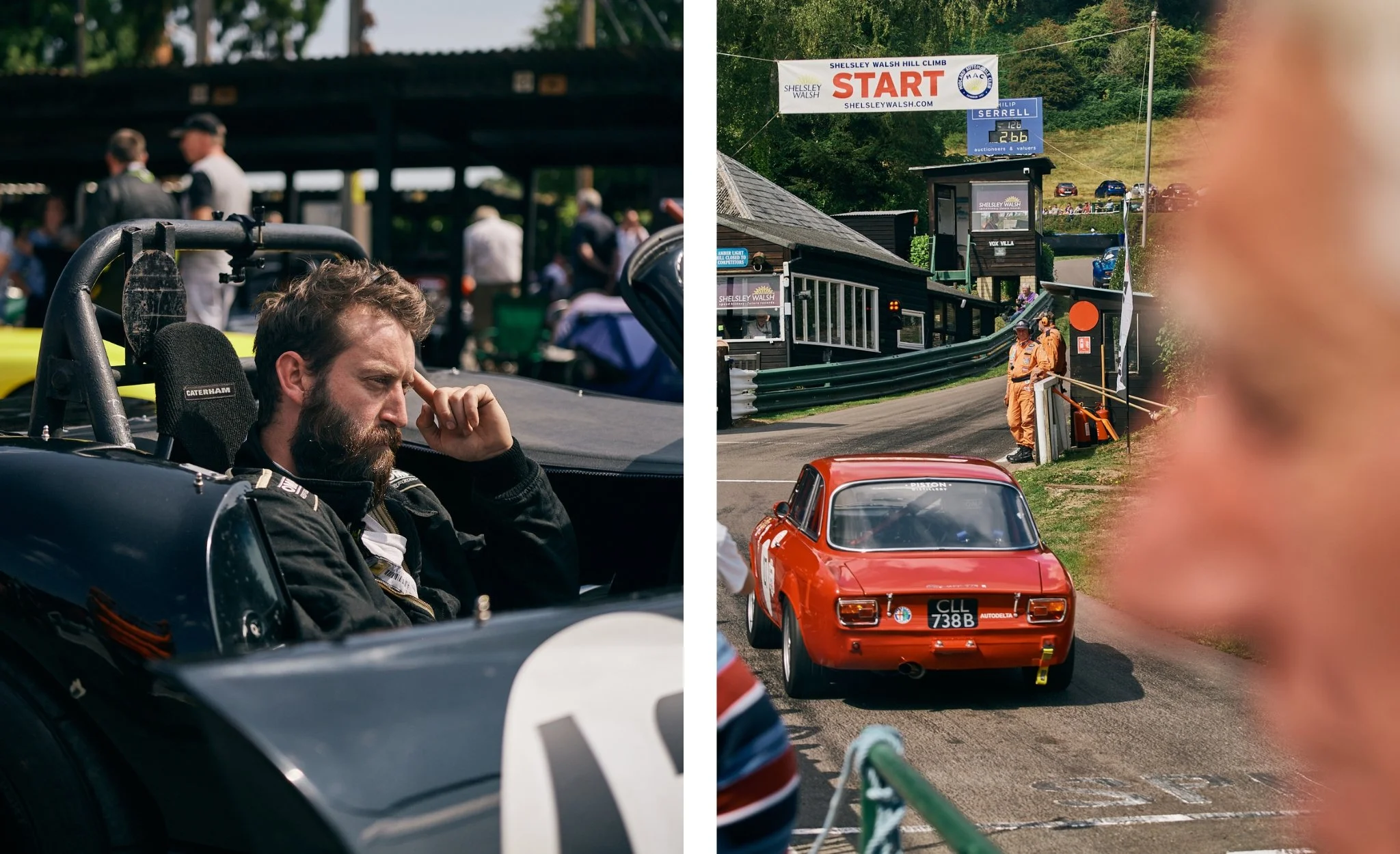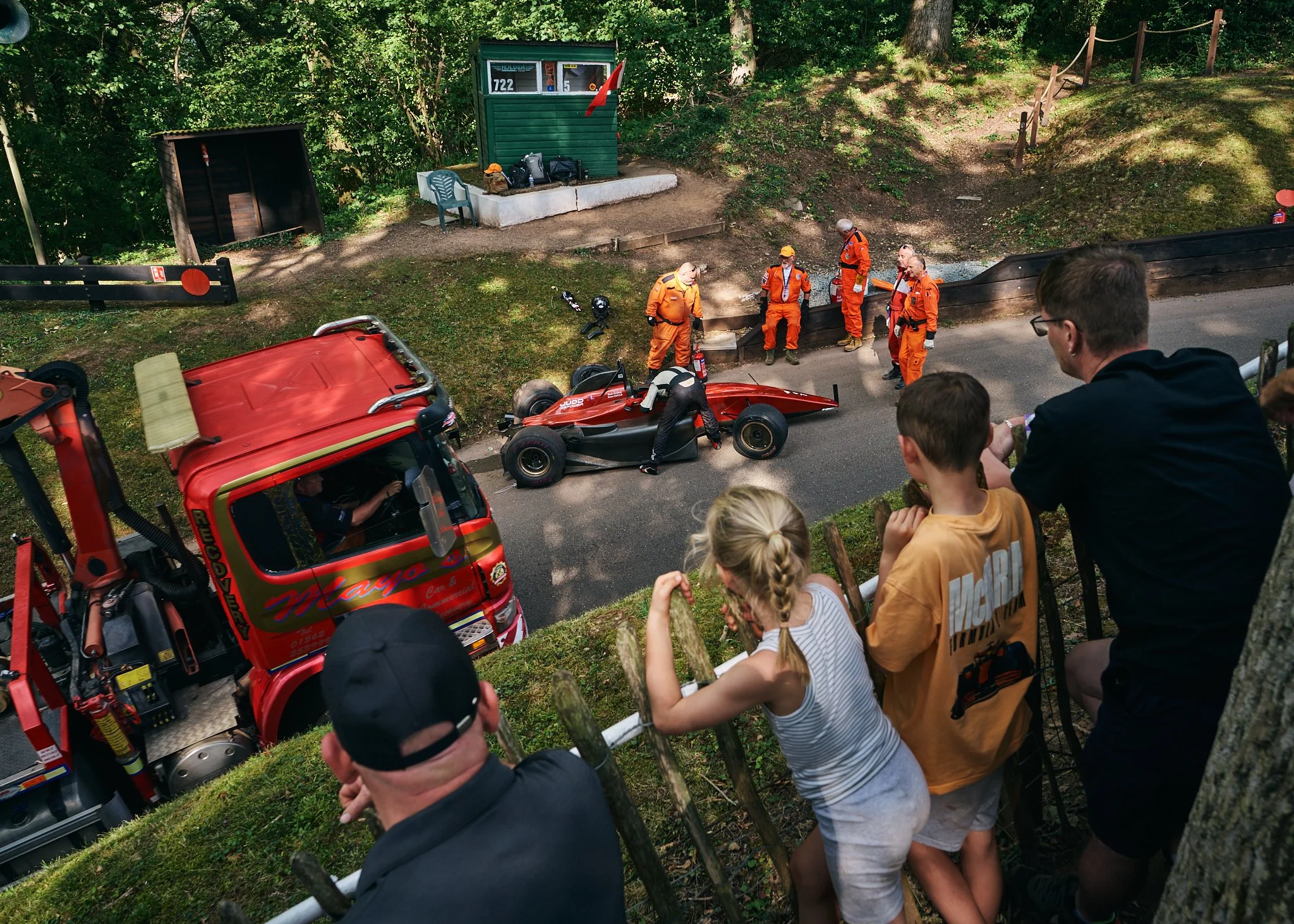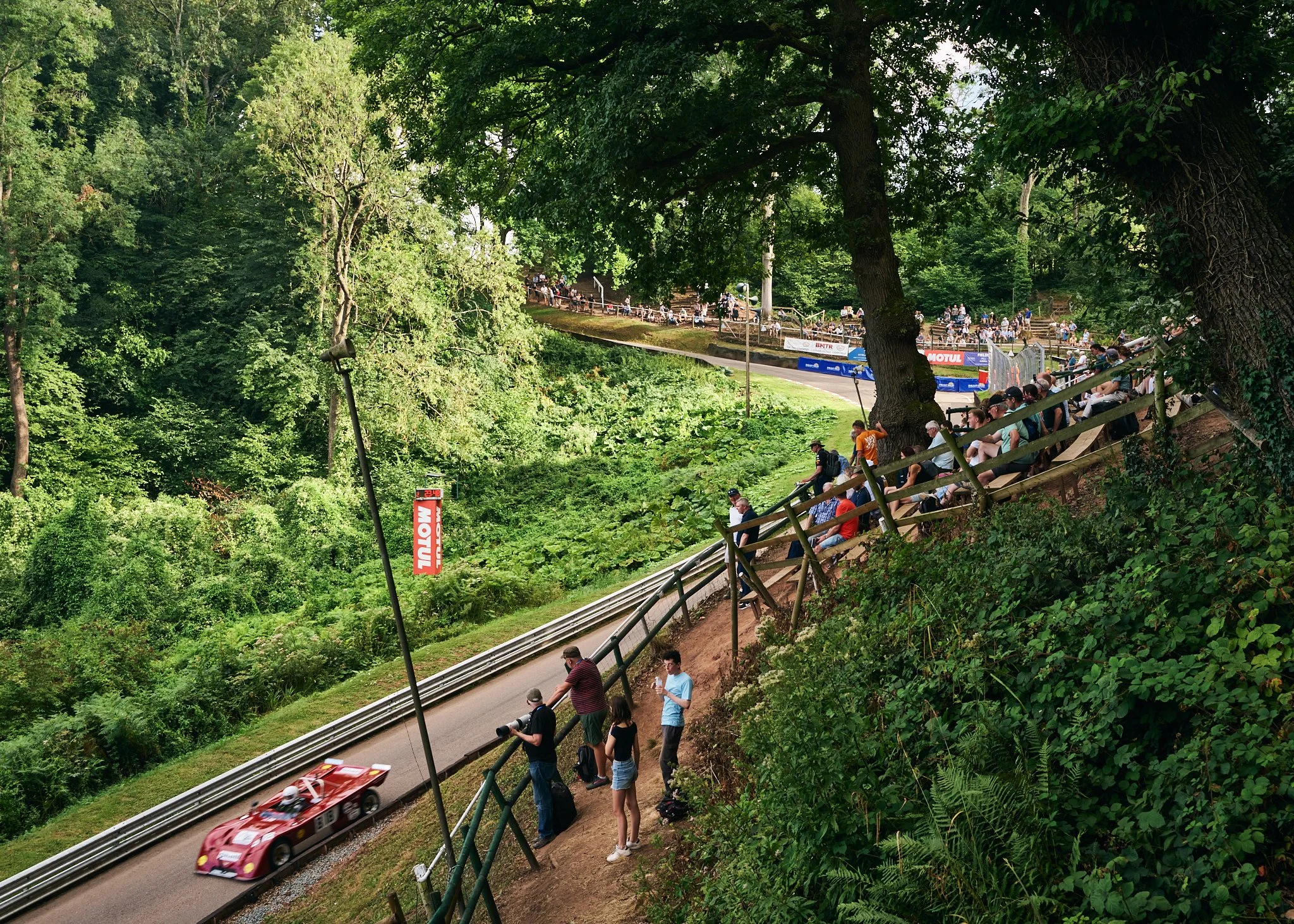On August 9th, I went to Shelsley Walsh, a hamlet of 30 people in the English Midlands, and home to the world’s oldest continually used motorsport racetrack. The track is just under a kilometer, with a slope of 1 in 7 and a maximum grade of 15%. If these numbers mean little to you, believe me, that is steep. If you were a cyclist, it’s the kind of hill you’d bike an extra five miles to avoid. Small wonder, then, that Shelsley Walsh has become a Mecca for hillclimbing, a niche motorsport.
Since 1905, enthusiasts have been tinkering with cars of every class and category to tear up this hill at ludicrous speeds. We’re talking up to 160 miles per hour (257 kmh). Reaching such velocity on at 15% incline is no joke. These cars—and the engineering they require—are impressive. The fastest hillclimbing cars go 0 to 60 in less time than Formula One cars. Let that sink in.
I’d been hired to photograph the finals of the British Hillclimbing Championship. The magazine I shot it for had also hired a writer, so it wasn’t in my brief to do much background research. Having covered F1 in the past, I assumed this hillclimbing championship would feel like a smaller, but similarly exclusive event, tailored to the British elite.
What little I did know supported the presumption. Most racers at Shelsley are from the UK; a few come from farther afield. It is quite a British affair. The Midlands are peppered with lavish estates of the English gentry, and we passed many of these en route from Manchester to Shelsley Walsh, which itself is part of such an estate. Situated on a manicured hillside, the venue’s carpark was brimming with so many rare vehicles that one could be forgiven for confusing it with a vintage car show.
Then there are the race cars themselves, with their acceleration topping F1 cars. Buying one, let alone modifying, maintaining, transporting, insuring and fueling it, is anything but cheap. All this expense, time and effort would make more sense if hillclimbing was a professional sport. But it’s not. While a few competitors do have day jobs as test and racing drivers, Shelsley Walsh is an amateur competition. The 300 pound prize money for the weekend is purely symbolic.
As such, I was expecting to encounter the poshest of the posh. If F1 was any guide, the paddock at Shelsley Walsh would be crawling with VIPs, aristocrats and social media influencers. As we neared the track on Saturday morning, I steeled myself for a weekend of being condescended to by people visibly wondering how I’d been allowed to get so close to them.
Boy, have I ever misjudged anything so profoundly.
From start to finish, my weekend at Shelsley Walsh was the most wholesome, delightful experience I’ve had the privilege of calling work. Every person I crossed paths with was extraordinarily kind. From the woman in the paddock office who gave me my media credentials even though I didn’t have cash for the 10-pound deposit, to the club’s archivist who spent 45 minutes teaching me its history and showing me old photos, to the half-dozen racers who forwent precious minutes of preparation to pose for portraits, the marshals and local photographers who shared tips about the best trackside spots to shoot from, and the spectator who bought me a pint after I sat next to him at a refreshments stand, winded and sweaty from photographing a crash. This list, I say with admiration, is woefully incomplete. Never have I felt so welcome in a place where I was so obviously an outsider.
The racing was thrilling, of course. The engines roar with the kind of sound that vibrates in your chest and limbs before it reaches your eardrums. The sensation is overwhelming and addictive, like many of humanity’s most powerful technologies. Each day hundreds of cars, each faster and more powerful than the last, thundered up the hill at a rate of roughly 64 cars per hour. The 5,000 or so spectators gather on the hillside, entranced by the breakneck procession. Those who manage to tear their attention away from the track for a moment are rewarded with a sweeping vista of storybook English countryside.
Bucolic location aside, one might expect the atmosphere at such a high octane motorsports event to be jittery, high strung, competitive, but the opposite is true. All weekend, the vibe at Shelsley Walsh was more family reunion than national championship. Seemingly everywhere I looked, togetherness, generosity and sportsmanship trumped competition. Photographers and marshals would banter like old friends, because they were. Organizers would ask staff members about their children by name. Rival drivers would swap tactics and help each other with last minute adjustments before suiting up to race.
To make the sport more inclusive, many cars are shared among multiple drivers. In fact, Matt Ryder and Shaun Gould, the drivers ranked 1st and 3rd going into the weekend, race in same car. The man who ended up winning the championship, 2nd seed Alex Summers, races in a car he custom-built so that his mother Lindsay, who is in her 70s, can race it too. Alex’s wife and father also race, albeit in their own cars. For the Summers, then, the weekend really is a bit of an annual family reunion. When Alex returned to the paddock after his winning run, his wife, still in her racing shoes, lowered their infant son into his arms before he’d even removed his helmet. The Summers’ aren’t the only dynasty well represented at Shelsley Walsh, either. Ryder, Gould and others also have relatives in the hillclimbing scene. Turns out, those who manage to make hillclimbing a family affair tend to perform best.
But that doesn’t mean family is everything. Far from it (Ryder and Gould, for instance, aren’t related). Throughout the weekend, I heard multiple distinct stories of drivers offering their cars to competitors experiencing engine trouble, so they could still race. People told these stories with obvious pride, even if they weren’t personally involved. This sport has managed to hold on to a culture of genuine chivalry, and being part of that clearly means a lot to people, as it should.
At Shelsley Walsh, the object is to win, but the purpose seems to be something deeper: community. It’s quite the place. I’m happy to know it. Here’s to another 120 years.





















